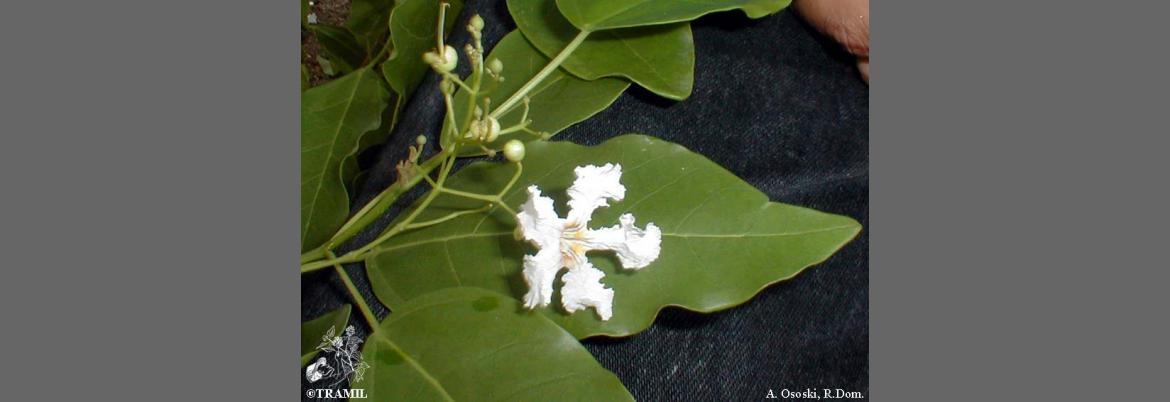1 GERMOSEN-ROBINEAU L, GERONIMO M, AMPARO C, 1984 Encuesta TRAMIL. enda-caribe, Santo Domingo, Rep. Dominicana.
2 WENIGER B, ROUZIER M, 1986 Enquête TRAMIL. Service Oecuménique d'Entraide SOE, Port au Prince, Haïti.
3 WENIGER B, SAVARY H, DAGUIHL R, 1984 Tri phytochimique de plantes de la liste TRAMIL. Faculté de Médicine, Université d'Haïti, Port au Prince, Haïti.
4 BOURGEOIS P, 1988 Etude chimique de Catalpa longissima. Rapport TRAMIL. Laboratoire de phytochimie, Faculté des Sciences, UAG, Basse Terre, Guadeloupe.
5 CHAUHAN AK, DOBHAL MP, UNIYAL PN, 1988 Phytochemical investigation of Catalpa longissima L. Part I. Herba Pol 34(1/2):3-5.
6 HEGNAUER R, 1973 Chemotaxonomy der Pflanzen. Basel & Stuttgart, Schweiz und Deutchland: Birkhauser Verlag. 6:882.
7 DUKE J, 1999 Chemicals and their biological activities in:Catalpa longissima (Jacq.) Dum.Cours. Dr. Duke’s Phytochemical and Ethnobotanical Databases.USDA-ARS-NGRL, Beltsville Agricultural Research Center, Beltsville, USA, Nov.20,2000. URL: http://www.ars-grin.gov/duke/
8 SAUVAIN M, MORETTI C, MUÑOZ V, 1990 Pruebas in vivo para paludismo realizadas en Bolivia sobre varias plantas TRAMIL. ORSTOM/IRD/IBBA, La Paz, Bolivia.
9 HERRERA J, 1988 Determinación de actividades biológicas de vegetales utilizados en medicina tradicional. Trabajo TRAMIL. Dep. de Farmacología, Facultad de Salud, Universidad del Valle, Cali, Colombia.
10 SOUZA BRITO A, 1995 Actividad farmacológica de Catalpa longissima. Trabajo TRAMIL. Dep. de Fisiología y Biofísica, Universidad de Campinas, Campinas, Brasil.
11 FENG PC, HAYNES LJ, MAGNUS KE, PLIMMER JR, 1964 Further pharmacological screening of some West Indian medicinal plants. J Pharm Pharmacol 16:115.
12 NEGWER M, 1987 Organic-chemical drugs and their synonyms (an international survey), 6th ed. Berlin, Germany: Akademie-Verlag.
13 SOUZA BRITO A, 1995 Toxicidad aguda de Catalpa longissima. Trabajo TRAMIL. Dep. de Fisiología y Biofísica, Universidad de Campinas, Campinas, Brasil.
14 MINISTERE DE L’EMPLOI ET DE LA SOLIDARITE, 1998 Les médicaments à base de plantes. Paris, France: Agence du Médicament.








